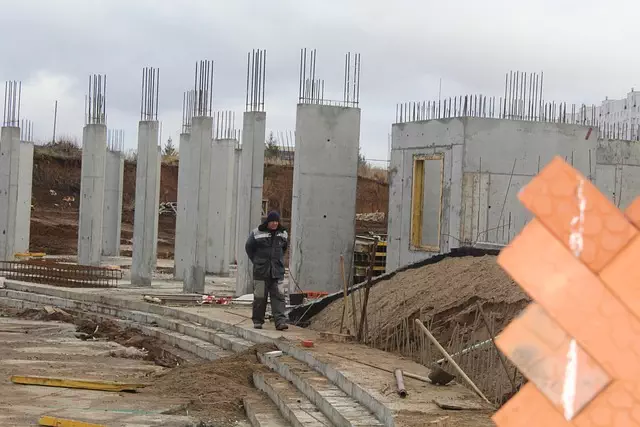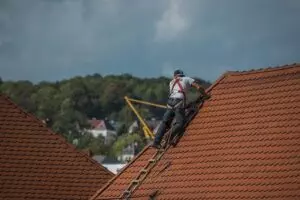Pier and Beam Foundation Inspection: A Comprehensive Guide to Repair
Regular inspection is paramount for Pier and Beam Foundation Repair, as settlement and structural is…….

Regular inspection is paramount for Pier and Beam Foundation Repair, as settlement and structural issues can cause subtle damage over time. Homeowners should look out for signs like cracks, warped floors, or bulging walls, and schedule inspections to detect early problems. The repair process involves meticulous visual examinations, specialized tool measurements, and data analysis to guide tailored solutions using non-invasive or invasive techniques. Post-inspection, homeowners receive clear recommendations and estimates for ensuring their home's stability and safety through effective Pier and Beam Foundation Repair.
“Pier and beam foundations, a common structural support system, require regular inspections to ensure longevity. This article guides you through the essentials of pier foundation inspection, offering insights into its basic understanding, importance, common issues, and repair techniques.
We’ll walk you through the step-by-step process, highlighting non-invasive vs invasive methods, and what follows after an inspection. Stay informed about potential damage signs and be empowered to take proactive measures for effective pier and beam foundation repair.”
Understanding Pier and Beam Foundations: A Basic Overview

Pier and beam foundations, also known as post-and-beam foundations, are a traditional building technique used in many parts of the world. This method involves setting up a series of vertical supports, or piers, spaced evenly apart, with beams running horizontally across them to create a stable base for the structure. Each pier is typically made of concrete and acts as a point of support, distributing the weight of the building evenly. The beams, also usually constructed from concrete or steel, provide additional stability and transfer the load from the structure to the piers.
Regular inspection of pier and beam foundations is crucial for identifying any signs of damage or degradation, which can often be subtle at first. Over time, factors like settlement, shifting soil conditions, or improper construction can lead to cracks in the piers or beams, compromising the structural integrity of the building. Early detection through routine inspections allows for timely Pier and Beam Foundation Repair, ensuring the longevity and safety of structures built on this foundation type.
Why Regular Inspections Are Essential for Pier Foundation Structures

Regular inspections are paramount for maintaining the integrity of pier and beam foundation structures. These inspections serve as a proactive measure against potential structural issues, which can often go unnoticed until they escalate into costly repairs. By scheduling routine checks, homeowners and property managers can identify early signs of damage, rot, or settling, allowing for timely intervention to prevent further deterioration.
Such inspections enable the detection of subtle changes in the foundation’s stability, ensuring that any necessary Pier and Beam Foundation Repair is carried out before it affects the overall structural integrity of the building. This proactive approach not only saves on repair costs but also safeguards the value and safety of the property, making regular inspections an indispensable practice for responsible property maintenance.
Common Issues and Signs of Damage to Look Out For

When inspecting a pier and beam foundation, there are several common issues and signs of damage to keep an eye out for. One of the most noticeable problems is structural settling, which can cause cracks in walls, floors, or ceilings. These cracks may appear as diagonal or vertical lines and can indicate that the foundation is shifting or settling unevenly. Another visible sign is warping or bowing of floor joists, beams, or support pillars, which could point to serious structural damage.
Additionally, keep an eye out for signs of moisture intrusion, such as water stains, peeling paint, or musty odours. Moisture can accelerate wood decay and compromise the integrity of the foundation, leading to further repairs like Pier and Beam Foundation Repair. Bulging or bowed walls, doors that stick or do not close properly, and uneven floors are also red flags, suggesting potential issues with the foundation’s load-bearing capacity. Regular inspection is key to identifying these problems early on, allowing for timely Pier and Beam Foundation Repair and preservation of the property.
The Inspection Process: Step-by-Step Guide

The inspection process for pier and beam foundation repair involves a meticulous step-by-step approach to ensure accurate assessment and effective solutions. It begins with a visual examination, where experts carefully observe any visible signs of damage or settlement in the foundation structure. This includes checking for cracks, tilting walls, or uneven floors, which could indicate issues with the piers supporting the building.
Next, specialized tools are employed to measure the stability and alignment of the foundation. This may involve using laser levels to check verticality and measuring spacing between piers. Additionally, moisture meters can be utilized to detect any signs of water intrusion, as this is a common cause of pier damage. The data collected during these steps forms the basis for identifying problem areas, which guides the subsequent decision-making process in terms of repair methods and materials required for effective pier and beam foundation repair.
Non-Invasive vs Invasive Pier Foundation Inspection Techniques

When conducting pier and beam foundation repair inspections, professionals have two primary approaches: non-invasive techniques and invasive methods. Non-invasive strategies involve minimal disruption to the property and surrounding structures. These include visual inspections using high-resolution cameras, thermal imaging, and ground-penetrating radar (GPR). Such technologies allow experts to examine the foundation’s structural integrity without breaking any surface, making them ideal for regular maintenance checks and preliminary assessments.
In contrast, invasive techniques require physical access to the foundation. This may involve digging, drilling, or cutting into the structure to gain a closer look at potential issues like settlement cracks, decayed timber, or insect infestation. While these methods provide more detailed insights, they can be costlier and cause temporary damage to the property. However, for critical repairs, invasive inspections are often necessary to pinpoint and address the root causes of foundation problems effectively.
Post-Inspection: What Happens Next in the Repair Process?

After a thorough pier and beam foundation inspection, the next step is to develop a repair plan. The process begins with evaluating the extent of damage and identifying the specific issues present in the structure. This includes assessing any cracks, settlement, or misalignments in the piers and beams. Once these problems are pinpointed, a tailored strategy can be created to address them effectively.
The repair process may involve various techniques such as releveling, pier replacement, beam reinforcement, or even complete foundation restoration. The chosen method will depend on the severity of damage and the structural integrity of the existing foundation components. Following the inspection, homeowners should expect clear recommendations and estimates for the work required to ensure their home’s stability and safety.







